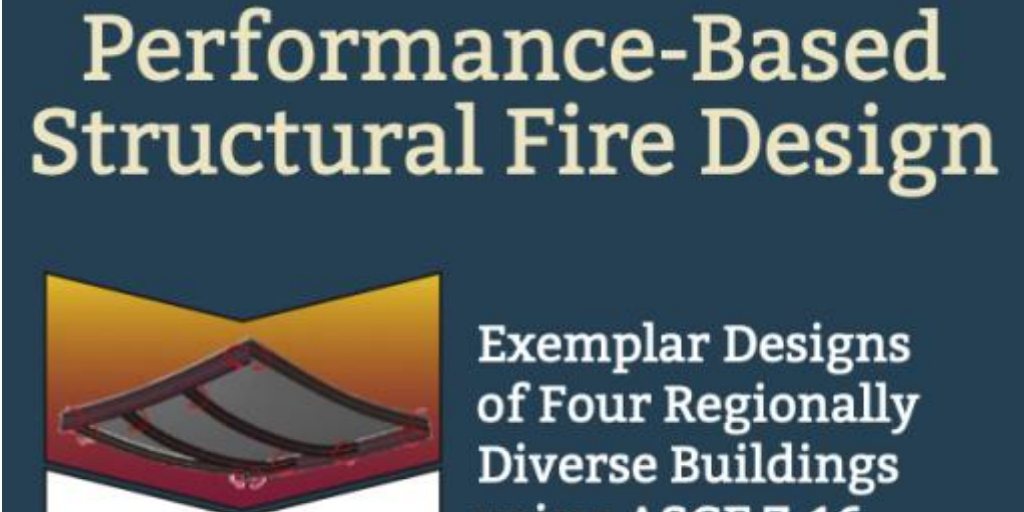By: Kevin LaMalva, P.E., F.ASCE
Structural design must address requirements for ambient loads early in the design process for new buildings. Structural fire safety is conventionally treated as an added feature like other aspects of fire safety and fire protection. This inherent lack of synergy produces inconsistent levels of structural fire safety and adds significant costs – time, money, energy, and materials – to many, if not most, building projects.
More than a century ago, building scientists and engineers reasoned a structural system could fulfill its intended function if the temperature of individual elements could be maintained below a specific “critical” temperature under fire conditions. Consequently, structural systems optimized for ambient hazards are later blanketed with fireproofing. Such an approach may leave stakeholders wondering if a rational use of resources (both physical and intellectual) came to bear.
Contemporary engineering tools and techniques enable structural fire engineering design (SFED) that achieves not only predictable structural performance for many building types under fire conditions but also facilitates faster and more efficient building construction[i]. SFED achieves this by shifting reliance from fireproofing to assessing the intrinsic safety of the structural system itself. Such a premise facilitates informed structural enhancements along with intelligently specified protective coatings. This may include nonuniform application based on each structural element’s ability to satisfy specific structural system design assumptions rather than generic furnace testing acceptance criteria. For many building types, an intelligent approach to structural fire safety could condense building construction schedules by approximately 1-2 weeks per floor. Similar opportunities exist to improve sustainability, aesthetics, quality control, site conditions, and life-cycle maintenance of buildings[ii]. However, intelligent structural fire safety may be justified on its safety merits alone, especially for buildings with a high consequence of failure.
With the support and oversight of the CPF in partnership with the Structural Engineering Institute of ASCE (ASCE/SEI), 40+ engineers and researchers participated in the development of this free resource entitled Performance-Based Structural Fire Design: Exemplar Designs of Four Regionally Diverse Buildings using ASCE 7-16, Appendix E. The primary motivation of this endeavor was to explicitly demonstrate what constitutes a proper SFED in the U.S. as per the industry standard ASCE/SEI Minimum Design Loads and Associated Criteria for Buildings and Other Structures Appendix E Performance Based Design Procedures for Fire Effects on Structures (ASCE/SEI 7)[iii]. ASCE/SEI 7 provides critical overarching and material-neutral requirements for SFED. Notably, ASCE/SEI 7 Appendix E Section E.3 – when used as an approved alternative to the applicable building code – requires a SFED to comply with the requirements of ASCE/SEI 7 Section 1.3.1.3, which effectively aligns SFED with structural design for ambient hazards such as wind and earthquake. Guidance provided by materials organizations (e.g., AISC 360 Appendix 4[iv]) serve to complement ASCE/SEI 7 provisions; however, these resources should not be relied upon exclusively for SFED,[v] as demonstrated within this free resource. Overall, these resources aim to free fire protection and structural engineers from the relic of prescriptive ‘fire resistance’ to help them produce better buildings using SFED.
There is currently a proposal under consideration for the International Building Code that may remove the term “fire resistance” as a specific term associated with approval of alternative methods and replace with the term “fire safety” which would more clearly allow the application of structural fire safety approaches. These proposals will be further discussed and voted on by the ICC membership in September 2022 followed by online vote of ICC’s Governmental members in October 2022.
The free resource provided by the CPF comprehensively and transparently documents the SFED of four real-life (anonymized) and regionally diverse steel-framed buildings. For the engineers involved, it became a refreshing opportunity to objectively solve the problem at hand, which is to provide adequate structural fire safety. Beneficially, the participants did not need to spend time dealing with entrenched industry interests, stakeholders’ unfamiliarity, or implementation of SFED too late in the design process. Indeed, it was quite an engineering utopia, one that structural engineers are fortunate to enjoy when designing structures for ambient hazards. As a result, there were many aha! and halleluiah! moments over the 2-year development period, as fire protection and structural engineers from competing commercial firms worked in a collegial manner to better our industry.
As demonstrated in the free resource, comprehensive structural analyses identified key structural system vulnerabilities under fire exposure that would not have been revealed by following the U.S. model building code[vi]. Furthermore, modest structural upgrades dramatically increased the level of intrinsic structural fire safety even when less fireproofing was applied. The dissemination of this free resource seeks to change the way that project stakeholders view the optimization of a structure. To assist with industry dissemination, the CPF provides the resource for free download:
Kevin LaMalva, P.E., F.ASCE, is with Holmes
References
[i] Post, N. (2020). Structural Fire Engineering Can Improve Building Safety, Schedule, Engineering News Record (ENR), October Issue
[ii] Newman, L., J. Dowling, and W. Simms. (2005). Structural Fire Design: Off-Site Applied Thin Film Intumescent Coatings. Berkshire, UK: Steel Construction Institute
[iii] ASCE/SEI 7 (2016). Minimum Design Loads and Associated Criteria for Buildings and Other Structures, American Society of Civil Engineers: Structural Engineering Institute.
[iv] AISC 360, Specification for Structural Steel Buildings, American Institute of Steel Construction, Chicago, IL, 2016
[v] LaMalva, K.; Hopkin, D. (2021) International Handbook of Structural Fire Engineering, Society of Fire Protection Engineers (SFPE) Series, 2021, DOI 10.1007/978-3-030-77123-2, ISBN 978-3-030-77122-5
[vi] LaMalva, K.; Gernay, T.; Bisby, L.; Torero, J.; Solomon, R.; Gales, J.; Hantouche, E.; Morovat, A.; Jones, C. (2020) ‘Rectification of Restrained vs. Unrestrained,’ Fire & Materials Journal, Vol. 44, No. 1





